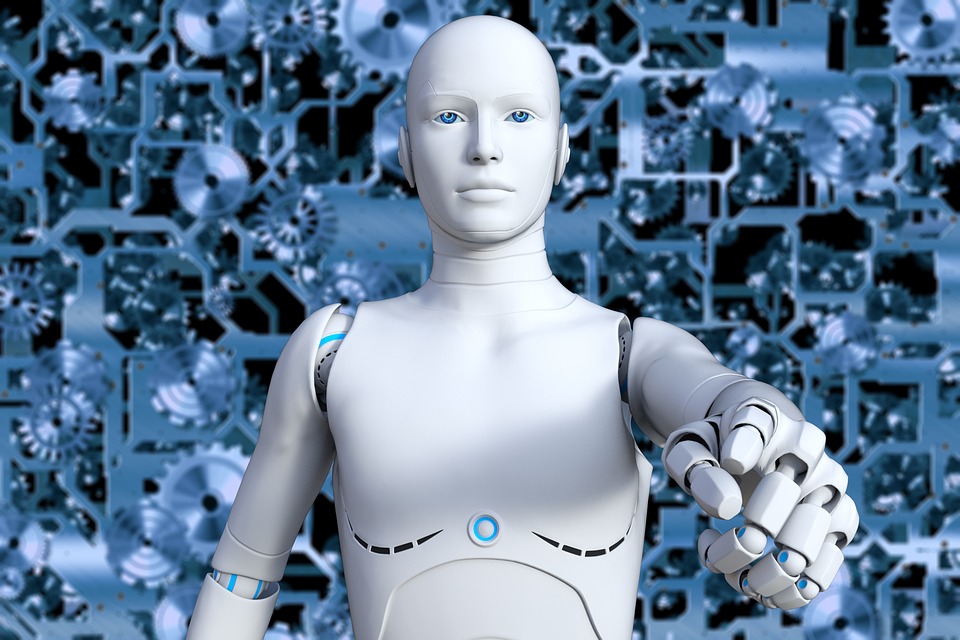In my last article, I discussed the creation of a robot athlete whose skills within certain athletic processes in a game were superior to those of humans. I am talking about the basketbot named CUE that has almost a 100% success rate in shooting baskets. We as humans are tempted to identify with a complex behavioral entity that demonstrates such superior skill in an activity that we value. A concern was expressed here that such identification with the robot basketball player, particularly as it becomes fully mobile and becomes a complete basketball player, will lead to psychologically blurring together with the robot, which can be very dangerous to a person maintaining a coherent sense of self and strong organic bonds with other people.
But one thing saves the person from complete robotization. This is that the person never becomes the complex behavioral entity, the basketbot, with which he identifies. He never becomes a basketball playing robot. He remains distinctly human.
There is a new robotic invention with roots in two other sports that tends to blur away this separation between robot and human. It is still in a prototype stage, but it threatens to totally transform the worlds of skiing and snowboarding. Basically, it consists of two braces, one for each leg, that together act as a kind of partial exoskeleton, a kind of smart shock absorber that anticipates the moves of the skier or the snowboarder with its sensors and adjusts itself accordingly. These braces are attached to both the person’s thighs and to his boots. The power source is carried in a light backpack.
The purpose of this exoskeleton is to help a person to be able to last longer in the actual performance of his sport and also to be able to decrease pain. The legs get support in their movements so that the activity is not so strenuous. It sounds, on one level, like a reasonable idea. But I believe there are ramifications in the use of such an exoskeleton that go beyond helping a person extend his skiing or snowboarding experience. The question is do we want a person to use for recreational purposes a robotic exoskeleton where, in effect, he will merge with the exoskeleton he is using in his mind and become part-robot. Notice that I added the phrase for recreational purposes. Exoskeletons are being used to help paralyzed people to move and walk again. As much as I am against using robot technology in the lives of average people, morally I would have great difficulty not making it available to people experiencing paralysis, now that the technology is available. It is the lesser of several evils for paralyzed people to become part-robot in order to at least partly escape their paralysis. The problem is that exoskeleton uses are going to multiply into all sorts of recreational applications for people who aren’t paralyzed. Skiing and snowboarding are just a beginning.
Is this going to be one of the first robotic inroads that allow people to experience themselves as cyborgs? A complex behavioral entity that is part human and part robot. Granted that a person is only strapped to the robots by leg braces and not truly blended together with them. But the physical advantages of keeping these leg braces strapped on are going to seem so seductively desirable. A skier will be able to avoid painful skiing and will have greater endurance. Within certain parameters, he will seem almost superhuman, impervious to mortality.
Of course, on the other hand, whatever he is able to achieve as a skier using these robotic leg braces will be tainted by the notion that what he is accomplishing is not done solely by his own efforts and his own skills. It can sort of be compared to a cyclist who normally rides a bicycle but decides to expend less energy by riding a tricycle instead. It is easier to ride a tricycle than a bicycle. It also doesn’t challenge a person to make a meaningful organic imprint through the skill of good bike-riding.
The same kind of thing can be said to be true with using robotic braces for skiing. A person will be able to ski longer and with less pain, but also with less of a challenge. The experience will be more bland, more vacuumized. It will not contribute in any meaningful way to his life narrative. It will be less of a rich vibrant experience. We need a little discomfort, even a little pain, mixed in with our enjoyable experiences, in order to challenge us to turn them into memorable imprints.
And then, of course, there is the matter of what using robotic braces does to our heads. Blurring our sense of self with robotic parts does give us a strong sense of physical boundaries, a strong physical sense of self-definition, which contributes to a false sense of immortality. And such a false sense of immortality eases the internal pressure on a person to try to make and preserve meaningful organic imprints that can contribute to his surrogate immortality in preparation for death.
Although robotic braces can create greater external self-definition, internally it contributes to fragmenting the sense of self. A person is no longer an organic whole. He has an organic part and a robotic part. And this affects the sense of self. He no longer has a fully coherent sense of self. And, by extension, he no longer has a fully coherent consciousness. Which means that, on a certain level, he no longer feels coherently alive.
Too much help of the robotic kind ends up numbing people and subtly crippling the human narrative. This is something we should keep in mind as we become increasingly bombarded by new opportunities for robotic extensions of our being. Particularly, when these robotic extensions are not being used for basic survival as with paralyzed people and are being used for recreation and to increase the opportunity for a kind of immortality, we should be very careful about embracing this technology, literally and figuratively – a technology which has so many unforeseen side effects for people.
© 2018 Laurence Mesiro





